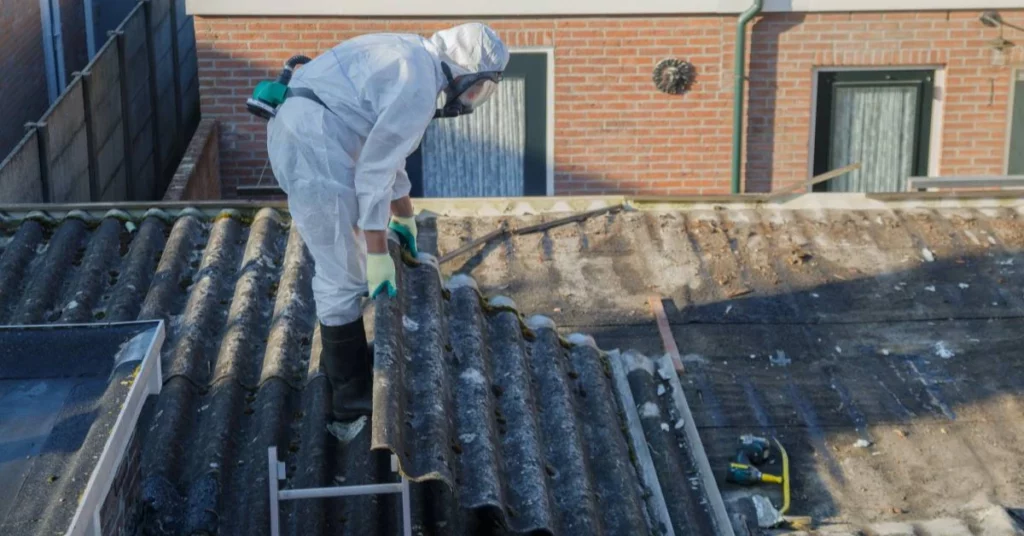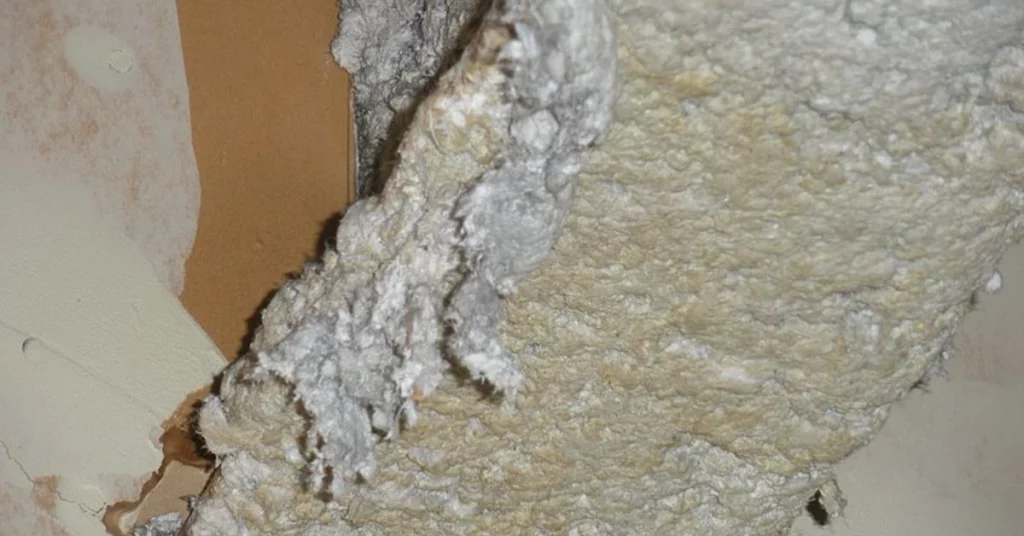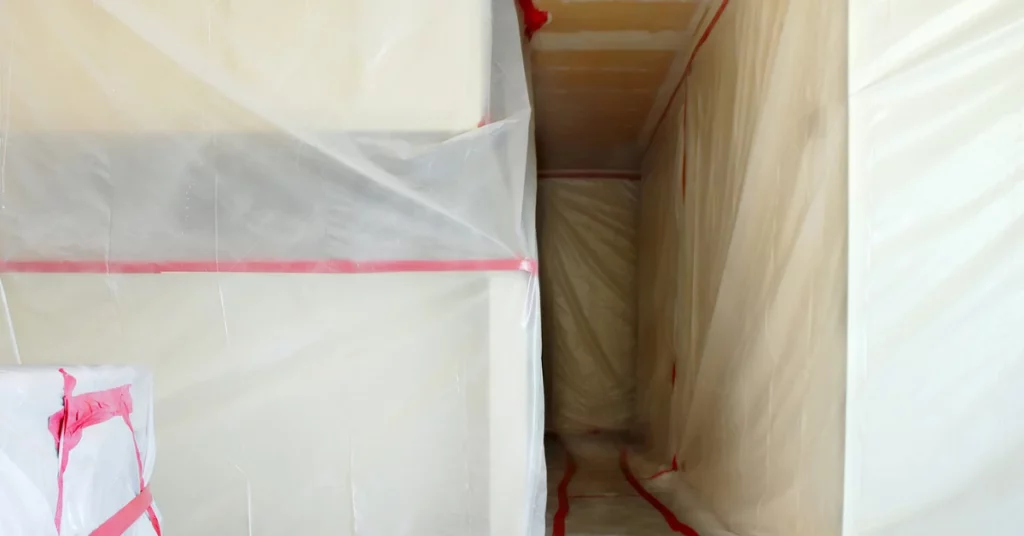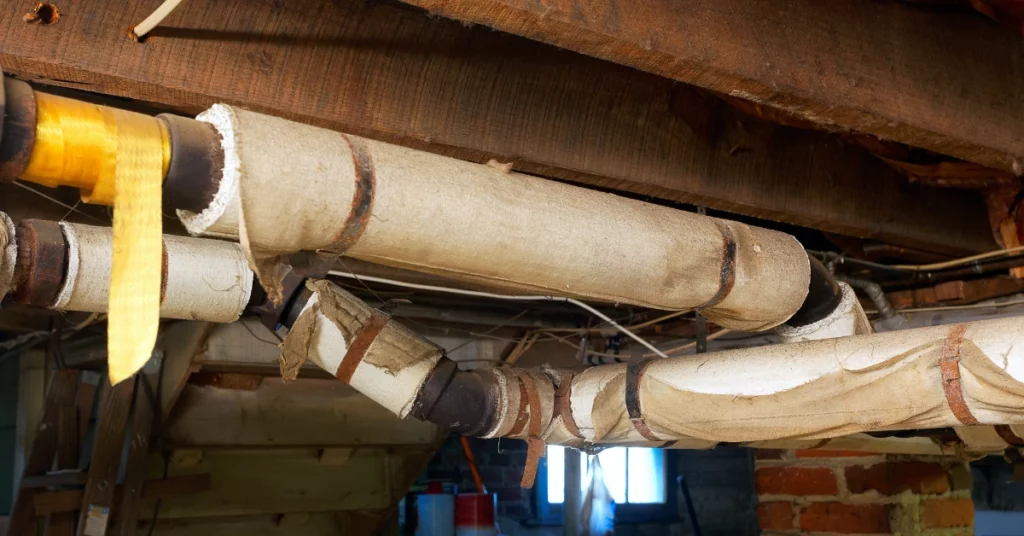Asbestos, once widely used in construction and manufacturing, is now recognized as a serious health hazard. This fibrous mineral, prized for its heat resistance and durability, can release microscopic fibers into the air when disturbed. These fibers, when inhaled, can cause severe lung diseases, mesothelioma and cancer.
Removing asbestos is not a task to be taken lightly. It requires careful planning, proper equipment, and strict adherence to safety protocols. This guide aims to provide you with essential information on asbestos removal, focusing on:
- The importance of safe handling
- Proper removal techniques
- Disposal and recycling methods
- Legal requirements and regulations
- Identifying asbestos in your environment
By understanding the risks and proper procedures for asbestos removal, you can protect yourself, your family, and your community from the dangers of this hazardous material.
Why It’s Important to Handle Asbestos Safely
Handling asbestos safely is critical due to its severe health and environmental risks. When asbestos-containing materials are damaged or disturbed, they release tiny fibers into the air. These fibers are invisible to the naked eye and can remain airborne for long periods.
Inhaling asbestos fibers can lead to several serious health conditions:
- Asbestosis: A chronic lung disease causing scarring of lung tissue
- Lung cancer: Particularly when combined with smoking
- Pleural thickening: Thickening of the lung lining, causing breathing difficulties
Safe handling practices prevent the release of these harmful fibers, protecting both workers and building occupants from exposure. Proper handling also prevents environmental contamination, as improper disposal can lead to asbestos fibers polluting soil and water sources.
Mesothelioma
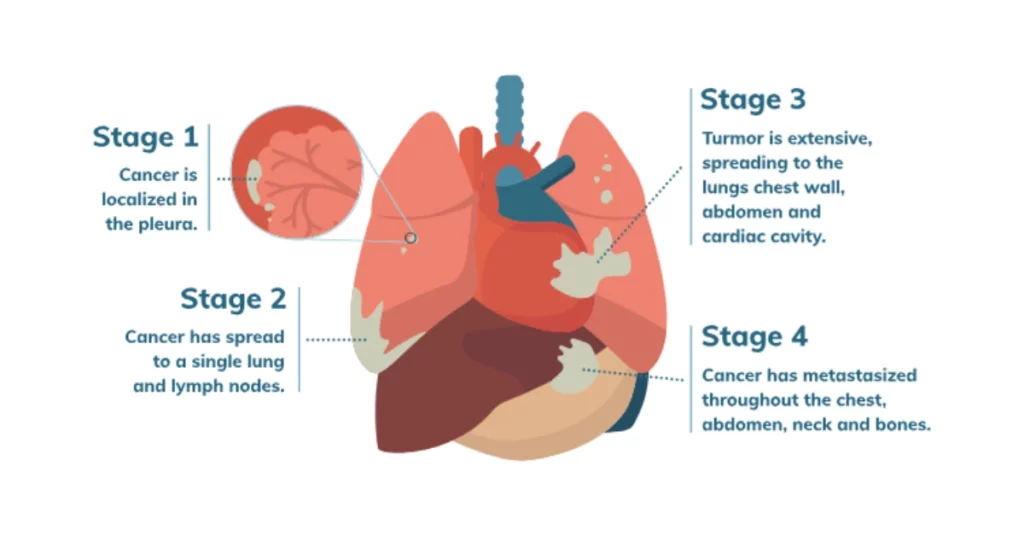
Mesothelioma is a rare but aggressive cancer primarily caused by asbestos exposure. It affects the mesothelium, the protective lining covering many internal organs.
The symptoms of this disease typically manifest 20 to 50 years after the initial asbestos exposure, making early detection challenging. There are three main types of mesothelioma, each affecting different parts of the body: pleural mesothelioma targets the lungs, peritoneal mesothelioma affects the abdomen, and pericardial mesothelioma impacts the heart.
Unfortunately, the prognosis for mesothelioma is often poor. This is largely due to the long latency period between exposure and symptom onset, which frequently results in diagnosis at an advanced stage of the disease.
The link between asbestos and mesothelioma is well-established, with about 80% of cases attributed to asbestos exposure. This underscores the importance of proper asbestos handling to prevent this life-threatening disease.
Long-term effects of mesothelioma include chronic pain, difficulty breathing, and reduced quality of life. Treatment options are limited and often focus on managing symptoms rather than curing the disease.
How to Handle and Dispose of Asbestos
The process of handling and disposing of asbestos involves several steps:
- Preparation: Before starting, ensure you have the right safety equipment. This includes disposable coveralls, gloves, and a respirator with P100 filters. Set up a containment area using plastic sheeting and tape to prevent asbestos fibers from spreading.
- Removal process: Wet the asbestos-containing material thoroughly with a mixture of water and detergent. This helps prevent fibers from becoming airborne. Use hand tools to carefully remove the material, avoiding breaking or crushing it.
- Containment: Place the removed asbestos in heavy-duty plastic bags. Double-bag the waste and seal it tightly with duct tape. Label the bags clearly as asbestos waste.
- Cleanup: Use damp cloths or a HEPA vacuum to clean the work area. Dispose of cleaning materials as asbestos waste. Take a shower and wash your work clothes separately from other laundry.
- Disposal: Transport the sealed asbestos waste to a licensed asbestos disposal facility. Many landfills have specific sections for asbestos waste. Never dispose of asbestos in regular trash.
- Professional assessment: After removal, consider hiring a professional to conduct air quality testing to ensure all asbestos has been removed safely.
Remember, these steps are a general guide. Depending on the amount and type of asbestos, professional removal may be required.
How Is Asbestos Recycled?
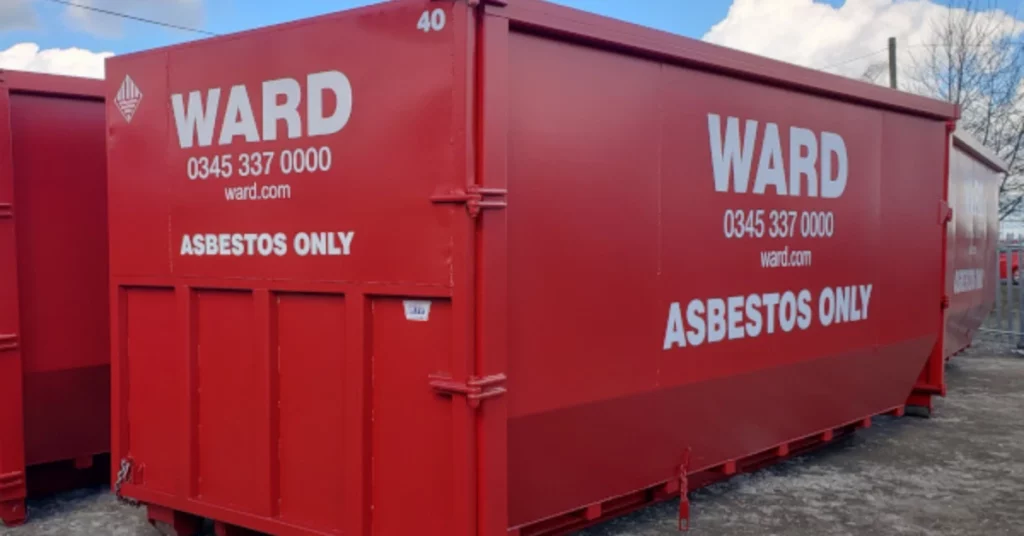
Asbestos recycling is an emerging field aimed at finding safe, alternative uses for asbestos-containing materials. The process typically involves:
- Thermal treatment: Heating asbestos to very high temperatures (around 1000-1250°C) to alter its fibrous structure.
- Chemical treatment: Using strong acids or bases to break down the asbestos fibers.
- Mechanochemical treatment: Combining grinding with chemical reactions to destroy the harmful properties of asbestos.
These methods aim to transform asbestos into non-hazardous materials that can be repurposed. However, asbestos recycling is still limited due to technical challenges and high costs.
Current applications for recycled asbestos include:
- Use in ceramic products
- Incorporation into certain construction materials
- Raw material for some chemical processes
Benefits of Recycling Asbestos Materials
Recycling asbestos can reduce landfill use, conserve resources by replacing raw materials in some applications, lower environmental impact by preventing asbestos fibers from entering the environment, and potentially create economic opportunities as recycling technologies improve.
Despite these benefits, it’s important to note that asbestos recycling is still not widely available and remains controversial due to safety concerns. The primary focus remains on safe removal and disposal of asbestos-containing materials.
Improper Asbestos Abatement and Disposal
Improper asbestos abatement and disposal pose significant risks to human health and the environment. Common mistakes include:
- Failure to use proper protective equipment: This exposes workers and others to asbestos fibers.
- Inadequate containment: Improper sealing of work areas can allow asbestos fibers to spread to other parts of a building.
- Dry removal methods: Using dry techniques instead of wet methods increases the likelihood of asbestos fibers becoming airborne.
- Improper packaging: Failing to double-bag asbestos waste or using non-approved containers can lead to fiber release during transport.
- Illegal dumping: Disposing of asbestos in regular trash or unauthorized locations contaminates the environment and puts others at risk.
The consequences of these actions can be severe. Asbestos fibers released into the air can be inhaled by workers, residents, or passersby, increasing their risk of developing asbestos-related diseases. Environmental contamination can occur, affecting soil and water quality.
Legally, improper asbestos handling can result in hefty fines and penalties. Businesses may face closure or legal action, and individuals can be held personally liable for damages. In some cases, criminal charges may be filed for willful violations of asbestos regulations.
Proper training, adherence to safety protocols, and compliance with regulations are essential to prevent these issues and ensure the safety of all involved in asbestos abatement and disposal.
How to Identify and Protect Your Family from Asbestos
Identifying asbestos in your home or workplace is essential for protecting your family’s health. Homes built before the 1980s are more likely to contain asbestos. Conduct a visual inspection for materials such as:
- Insulation
- Flooring Materials
- Ceiling Materials
- Roofing Materials
- Adhesives
- HVAC Ductwork
- Electrical Components
- Drywall
- Shingles and siding
- Plumbing
- Fireplace materials
To protect your family, don’t disturb suspected materials if they’re in good condition. Regularly inspect known or suspected asbestos materials for signs of wear or damage. If asbestos materials are damaged or you’re planning renovations, hire licensed professionals for removal.
Educate family members about potential asbestos locations and the importance of not disturbing these materials. Maintain good indoor air quality by using HEPA air purifiers and keeping your home well-ventilated.
How to Report Improper Abatement
If you suspect improper asbestos abatement, take action. Document the issue with photos or videos if possible, without putting yourself at risk. Contact local authorities such as your local health department or building inspection office.
Many states have specific departments handling asbestos concerns, so report to these state agencies as well. For serious violations, contact the EPA’s National Response Center. If the issue is workplace-related, file a complaint with the Occupational Safety and Health Administration.
When reporting, provide as much detail as possible about the location, the work being done, and why you believe proper procedures aren’t being followed. Your identity can often be kept confidential if you’re concerned about retaliation.
Regulations on Asbestos Handling and Disposal
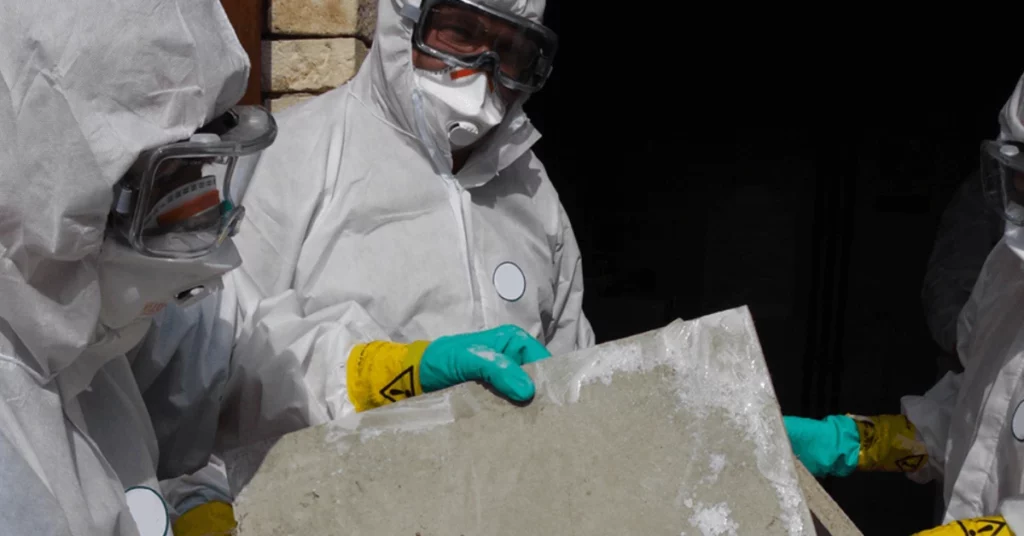
Asbestos handling and disposal are strictly regulated due to the material’s health risks. These regulations aim to protect workers, the public, and the environment from asbestos exposure.
Federal Laws
The primary federal laws governing asbestos include:
Clean Air Act (CAA): This act classifies asbestos as a hazardous air pollutant and sets standards for its use and disposal.
Toxic Substances Control Act (TSCA): The TSCA regulates the production, importation, use, and disposal of specific chemicals, including asbestos.
Occupational Safety and Health Act: This act sets standards for workplace safety, including specific rules for asbestos exposure in occupational settings.
Resource Conservation and Recovery Act (RCRA): The RCRA governs the disposal of hazardous waste, including asbestos-containing materials.
These laws establish guidelines for asbestos identification, removal, handling, and disposal. They also set exposure limits and require proper training for workers who may encounter asbestos.
Agencies That Determine and Oversee Asbestos Regulations
Several federal agencies are involved in determining and enforcing asbestos regulations:
Environmental Protection Agency (EPA): The EPA sets standards for asbestos use, removal, and disposal. It also regulates asbestos in schools and public buildings.
Occupational Safety and Health Administration (OSHA): OSHA establishes and enforces standards for workplace safety, including limits on asbestos exposure and requirements for protective equipment.
Consumer Product Safety Commission (CPSC): The CPSC regulates asbestos in consumer products and can ban or restrict its use.
Department of Transportation (DOT): The DOT regulates the transport of hazardous materials, including asbestos.
These agencies work together to create a comprehensive regulatory framework for asbestos management. They also provide guidance and resources to help individuals and organizations comply with asbestos regulations.
